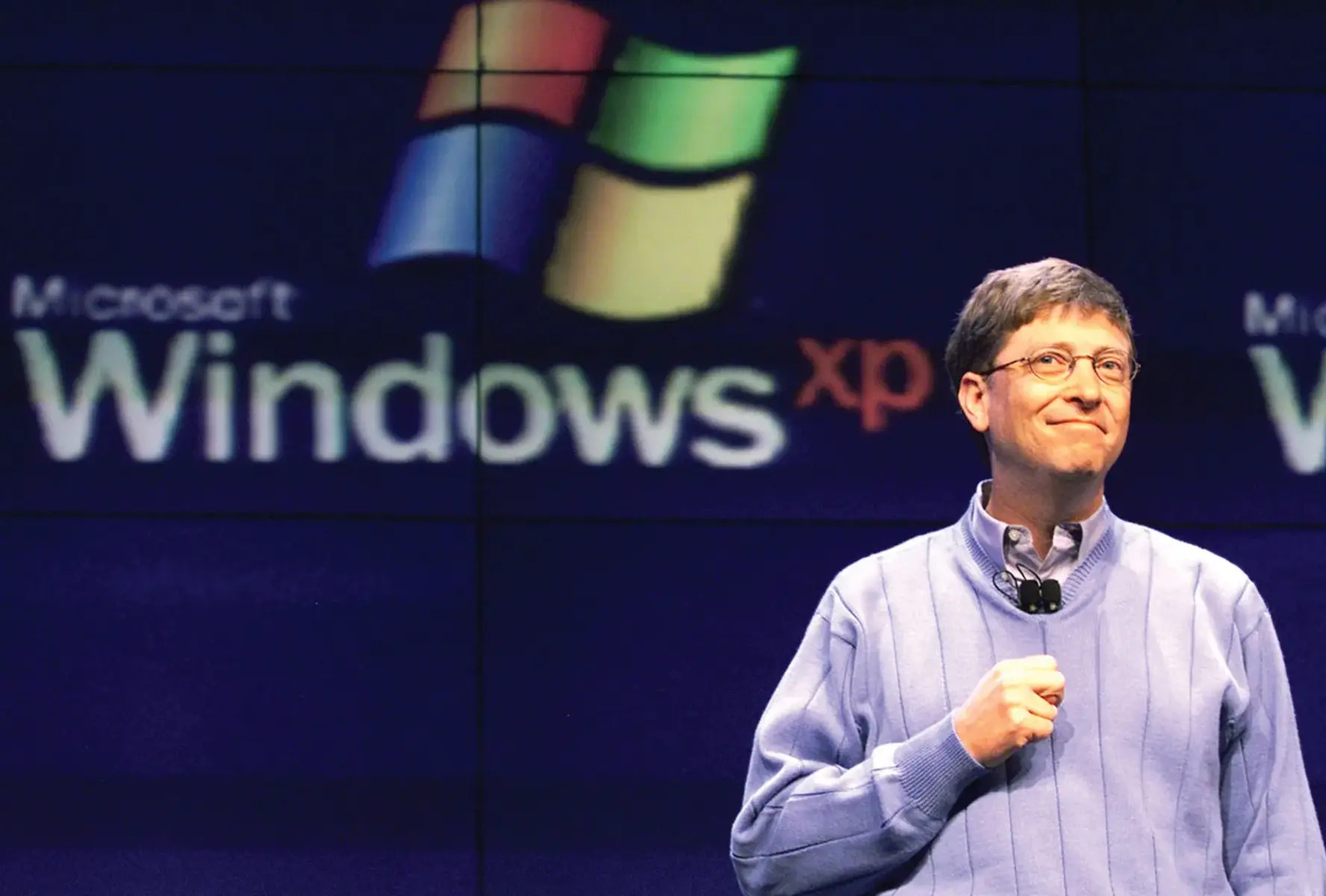The Early Years: Developing His Technology Skills
The Early Years: Developing His Technology Skills
Bill Gates, the co-founder of Microsoft and one of the most influential figures in technological innovation, had his first taste of programming at the tender age of 13. Fascinated by computers and their potential, he taught himself programming languages such as BASIC, which laid the foundation for his future success.
During his time at Lakeside School in Seattle, Gates gained access to a time-shared computer, giving him the opportunity to further develop his programming skills. He was driven by an insatiable curiosity and an innate understanding of the possibilities that technology offered.
In his early years, Gates immersed himself in coding and computer science courses at Harvard University, honing his skills and deepening his understanding of the field. This dedication to learning and self-improvement played a vital role in shaping his technological prowess.
Moreover, Gates started to demonstrate his entrepreneurial spirit during this period. Recognizing the potential of the emerging personal computer industry, he teamed up with his childhood friend, Paul Allen, to develop a version of the BASIC programming language for the Altair 8800, one of the earliest microcomputers. This venture marked the beginning of Gates’ journey as a technology innovator and business strategist.
Gates’ commitment to expand his technological skills became evident when he dropped out of Harvard University to focus on Microsoft, the software company that would revolutionize the technology industry. This decision allowed him to fully immerse himself in the cutting-edge world of software development, where his coding abilities and technical acumen flourished.
During these early years, Gates also began to cultivate his leadership skills, honing his ability to inspire and motivate the talented individuals he brought on board to contribute to Microsoft’s success. His aptitude for technology, combined with his remarkable ability to see the bigger picture, allowed him to guide the company towards transformative innovations that would reshape the future of computing.
In this formative stage of his career, Gates not only developed his technology skills but also laid the groundwork for his entrepreneurial vision. His relentless pursuit of knowledge, coupled with a willingness to take risks, enabled him to create a formidable legacy in the world of technology.
As Gates’ journey unfolded, his early experiences and the foundation he established during his formative years became pillars of his success. With his exceptional technological skills serving as a driving force, Gates would go on to make tremendous contributions to the field of computing, forever cementing his place as a technology visionary.
The Founding of Microsoft: Applying His Technology Skills in a Business Model
The Founding of Microsoft: Applying His Technology Skills in a Business Model
After laying the groundwork for his technology skills, Bill Gates embarked on a groundbreaking journey that would pioneer the modern software industry. Alongside Paul Allen, Gates co-founded Microsoft, leveraging his technological prowess and entrepreneurial spirit to lay the foundation for one of the most influential companies in the world.
Gates’ ability to fuse his technical expertise with a keen business sense became evident right from the beginning. Recognizing the potential of software as a commercial product, Gates and Allen made a pivotal decision to create an operating system for the emerging personal computer market. This led to the development of MS-DOS, Microsoft’s first major success, which soon became the industry standard for PC operating systems.
Applying his technology skills in a business model, Gates understood the importance of building strategic partnerships. He forged alliances with hardware manufacturers to ensure that MS-DOS was pre-installed on their machines, giving Microsoft an incredible advantage in the growing marketplace. This shrewd move not only cemented Microsoft’s dominance but also paved the way for further innovations.
As Microsoft continued to evolve, Gates’ vision as a technology innovator became more apparent. He spearheaded the development of Windows, a graphical user interface that revolutionized the way people interacted with computers. Windows became the cornerstone of Microsoft’s success, establishing the company as a leader in the software industry.
Gates’ dedication to expanding Microsoft’s reach and influence extended beyond operating systems. Recognizing the immense potential of software applications, he oversaw the development of Microsoft Office, a suite of productivity tools that became an indispensable part of businesses and individuals worldwide. This diversification further solidified Microsoft’s position as a technology powerhouse.
Gates’ acumen for technology and business went hand in hand, propelling Microsoft’s success. Understanding the power of innovation, he encouraged a culture of creativity and openness within the company, fostering an environment where groundbreaking ideas could flourish. His ability to stay ahead of market trends and adapt to evolving technologies ensured that Microsoft remained at the forefront of the industry.
Moreover, Gates’ dedication to philanthropy and his belief in the transformative power of technology are evident in his efforts to bridge the digital divide. Through initiatives like the Bill & Melinda Gates Foundation, he has leveraged his technological know-how to empower underprivileged communities and drive positive change around the globe.
In summary, the founding of Microsoft exemplifies how Bill Gates applied his technology skills in a business model that defined the modern software industry. His ability to innovate, build strategic alliances, and foresee market trends set Microsoft on a trajectory of unprecedented success. Gates’ vision and unwavering determination have left an indelible mark on the world, forever solidifying his position as a technology pioneer and business icon.
Building the Foundation: Gates’ Technological Contributions to Microsoft
Building the Foundation: Gates’ Technological Contributions to Microsoft
Bill Gates’ technological contributions to Microsoft played a pivotal role in establishing the company as a global powerhouse in the tech industry. From the early years to his later endeavors, Gates’ leadership and technical expertise shaped Microsoft’s trajectory and laid the foundation for its continued success.
One of Gates’ notable technological contributions was the development of the Microsoft Windows operating system. Recognizing the need for a user-friendly interface, Gates led the charge in creating Windows, which revolutionized the way people interacted with computers. Through its graphical user interface and multitasking capabilities, Windows propelled Microsoft to new heights, capturing a dominant share of the market and becoming a staple in homes and businesses worldwide.
Additionally, Gates spearheaded the development of Microsoft Office, a suite of productivity tools that included popular applications such as Word, Excel, and PowerPoint. This comprehensive software package not only solidified Microsoft’s dominance in the business market but also became an integral part of daily life for millions of people. Gates’ technological acumen and foresight led to the creation of Office, paving the way for Microsoft’s expansion into new avenues and solidifying its position as a leader in the software industry.
Furthermore, Gates’ commitment to innovation and staying ahead of the curve resulted in the successful launch of groundbreaking products and technologies. Under his guidance, Microsoft ventured into new territories such as cloud computing with the introduction of Azure, a platform that revolutionized the way businesses accessed and utilized technology resources. By offering scalable and flexible solutions, Gates opened up new opportunities for businesses to streamline their operations and leverage the power of the cloud.
Additionally, Gates’ technological contributions extended beyond software and into the realm of hardware. Microsoft’s foray into the consumer electronics market with the development of the Xbox gaming console showcased Gates’ ability to identify emerging trends and leverage technology in innovative ways. The Xbox became a formidable player in the gaming industry, delivering immersive gaming experiences and putting Microsoft at the forefront of console gaming.
Beyond these notable achievements, Gates’ overarching impact on Microsoft and the technology industry was rooted in his leadership style and commitment to fostering innovation. He encouraged a culture of creativity and intellectual curiosity within Microsoft, empowering employees to push the boundaries of what was possible. This culture of innovation led to the development of countless technological advancements that continue to shape the industry today.
In summary, Gates’ technological contributions to Microsoft were instrumental in building the foundation of the company’s success. From the development of Windows to pioneering new technologies such as Azure and Xbox, Gates’ visionary leadership and technical expertise created a legacy of innovation that propelled Microsoft to the forefront of the tech industry. His relentless pursuit of excellence and commitment to pushing the boundaries of what technology can achieve continue to inspire and shape the company’s trajectory to this day.
The Infamous Windows Operating System: Gates’ Technological Breakthrough
The Infamous Windows Operating System: Gates’ Technological Breakthrough
One of Bill Gates’ most significant technological achievements is the development of the Windows operating system. Released in 1985, Windows revolutionized the way people interacted with computers and propelled Microsoft to unprecedented levels of success.
Before Windows, computer interfaces were primarily text-based, requiring users to input commands through the keyboard. Gates recognized the need for a more intuitive and user-friendly interface, one that would make computers accessible to a broader audience. This led to the creation of Windows, which introduced a graphical user interface (GUI) that allowed users to navigate the computer using a mouse and icons.
Windows was a game-changer in the industry, enabling users to perform tasks with a click of a mouse rather than memorizing complex commands. The GUI provided a visual representation of files, folders, and applications, making computing more accessible to the average user. This breakthrough shifted the paradigm of computing, transforming it from a complex and technical endeavor to a user-friendly and intuitive experience.
The release of Windows 3.0 in 1990 marked a major milestone for Microsoft. This version of Windows introduced features such as scalable font support, improved graphics capabilities, and the ability to run multiple applications simultaneously. It quickly became the dominant operating system, surpassing industry rivals and solidifying Microsoft’s position as a tech powerhouse.
Gates’ vision for Windows extended beyond the desktop environment. He recognized the potential for Windows to become a platform for developers to build a wide range of software applications. This led to the development of the Win32 API, a set of tools and libraries that allowed developers to create applications that would run seamlessly on Windows. This open ecosystem fostered a thriving software market, resulting in a vast array of programs and utilities being available for Windows users.
Windows continued to evolve with subsequent releases, introducing new features and improvements with each iteration. Windows 95, Windows XP, Windows 7, and most recently, Windows 10, all brought their own advancements and enhancements to the operating system. With each iteration, Gates ensured that Windows remained at the forefront of technological innovation and user experience.
The widespread adoption of Windows transformed not only the way individuals used computers but also revolutionized the business landscape. Companies around the world embraced Windows as the standard operating system, driving productivity, collaboration, and efficiency. Windows became the backbone of countless industries, spanning from education and healthcare to finance and entertainment.
Gates’ technological breakthrough with Windows not only established Microsoft as the leading player in the operating system market but also set the stage for the company’s expansion into other areas such as productivity software, gaming, and cloud computing. Windows became a household name, synonymous with the personal computer revolution and an essential tool in the digital age.
In summary, Gates’ development of the Windows operating system was a groundbreaking technological breakthrough that transformed the way people interacted with computers. The introduction of a graphical user interface and the user-friendly experience offered by Windows opened up new possibilities for computer users, making computing accessible and intuitive. Windows’ widespread adoption and continuous evolution solidified Gates’ position as a technology visionary and forever changed the tech industry.
Expanding into New Avenues: Gates’ Technological Ventures Beyond Microsoft
Expanding into New Avenues: Gates’ Technological Ventures Beyond Microsoft
While Bill Gates is primarily known for his influential role in the founding and growth of Microsoft, his technological ventures extend far beyond the confines of the software giant. Gates’ insatiable curiosity and desire to make a positive impact on the world have led him to explore various new avenues, leveraging technology to drive innovation and address pressing global challenges.
One of Gates’ most notable technological ventures is his focus on renewable energy and climate change. Through the Breakthrough Energy Ventures, Gates has invested in numerous startups working on cutting-edge solutions for clean energy generation and carbon reduction. By combining his technical expertise and entrepreneurial mindset, Gates aims to accelerate the development and deployment of technologies that can effectively mitigate the effects of climate change.
Gates’ passion for healthcare and improving global health outcomes has also taken him on a journey into the realm of medical research and innovation. Through organizations like the Bill & Melinda Gates Foundation, Gates has invested in groundbreaking research and development initiatives, tackling diseases such as malaria, HIV/AIDS, and polio. His technological expertise and understanding of the power of data and analytics have been instrumental in driving data-driven approaches to healthcare, enabling better treatment and prevention strategies.
Moreover, Gates’ philanthropic efforts have extended to education and access to technology. Through initiatives like the online learning platform Khan Academy and the distribution of low-cost computers to underserved communities, Gates has worked towards bridging the digital divide and ensuring that students from all backgrounds have equal access to educational resources and opportunities.
Another area where Gates has made significant technological ventures is in the field of agricultural innovation. Through the Gates Foundation, he has focused on supporting farmers in developing regions, leveraging technology to improve productivity and sustainability. Gates’ belief in the power of technology to combat hunger and poverty has led to investments in agricultural research, crop improvement techniques, and access to market information for smallholder farmers.
Furthermore, Gates’ technological ventures extend to the realm of artificial intelligence (AI) and machine learning. Recognizing the transformative potential of AI, Gates has been investing in AI research and development, with a focus on ethical and responsible applications of the technology. His efforts aim to harness the power of AI to address societal challenges while safeguarding individual rights and privacy.
Gates’ ventures beyond Microsoft demonstrate his commitment to using technology as a force for positive change. His willingness to explore new avenues, invest in cutting-edge innovations, and apply his technological expertise to tackle global challenges exemplify his leadership in the intersection of technology, philanthropy, and social impact.
In summary, Gates’ technological ventures beyond Microsoft have showcased his commitment to creating a better, more sustainable world. Through his investments in renewable energy, healthcare, education, agriculture, and AI, Gates has demonstrated his ability to leverage technology for the greater good. His endeavors serve as an inspiration to future generations, emphasizing the importance of using technology as a tool to address pressing global challenges and drive positive change.
Revolutionizing the Tech Industry: Gates’ Philanthropic Efforts through Technology
Revolutionizing the Tech Industry: Gates’ Philanthropic Efforts through Technology
Bill Gates, known for his profound impact on the technology industry, has also made significant contributions through his philanthropic efforts. Through the Bill & Melinda Gates Foundation, Gates has leveraged technology to revolutionize the tech industry and drive positive change in various sectors, making a lasting impact on global health, education, and poverty alleviation.
One of Gates’ key philanthropic efforts has been directed towards global health initiatives. Leveraging his technology expertise, he has helped spearhead innovative approaches to tackling diseases and improving healthcare outcomes. Gates has invested in groundbreaking research and development, using technology to develop new vaccines, diagnostics, and treatment methods. His commitment to eradicating diseases such as malaria, polio, and HIV/AIDS has resulted in tremendous progress and saved countless lives.
Gates recognizes the transformative power of data and analytics in driving evidence-based solutions. Through data-driven approaches, he has championed improved healthcare delivery systems, enabling more efficient and targeted interventions. By harnessing the potential of technology in analyzing vast amounts of healthcare data, Gates’ philanthropic efforts have paved the way for better decision-making and improved health outcomes globally.
Furthermore, Gates has made significant contributions to the field of education through his philanthropy. Embracing technology as an enabler of equitable access to education, Gates has funded initiatives like the Khan Academy, a nonprofit online learning platform. Through this platform, students around the world have access to high-quality educational resources and opportunities for self-paced learning. Gates’ philanthropic efforts have helped bridge the digital divide, ensuring that education is accessible to all, regardless of geographical or socioeconomic barriers.
Gates’ philanthropic ventures have also focused on poverty alleviation and economic empowerment. By leveraging technology and innovative solutions, Gates has aimed to uplift individuals and communities from poverty. He has invested in initiatives that support financial inclusion, entrepreneurship, and job creation, empowering individuals to improve their livelihoods and break the cycle of poverty.
In addition to his direct philanthropic efforts, Gates has been an advocate for open access to technology and information. He has actively supported open-source software initiatives, recognizing the power of collaboration and collective problem-solving. Gates’ commitment to open technology has fostered a culture of innovation, allowing developers and entrepreneurs worldwide to build on existing platforms to provide solutions to pressing global challenges.
Through his philanthropic endeavors, Gates has not only revolutionized the tech industry but also inspired a new generation of philanthropists and social entrepreneurs. His integration of technology and philanthropy has become a model for driving impactful change, showcasing the potential of technology to address some of the world’s most pressing issues.
In summary, Gates’ philanthropic efforts through technology have revolutionized the tech industry and made a significant impact on global health, education, and poverty alleviation. By leveraging his technological skillset and resources, Gates has spearheaded innovative approaches to solve complex problems. His philanthropic initiatives embody the idea that technology, when used responsibly and with a focus on equity, can be a powerful tool for positive change.





